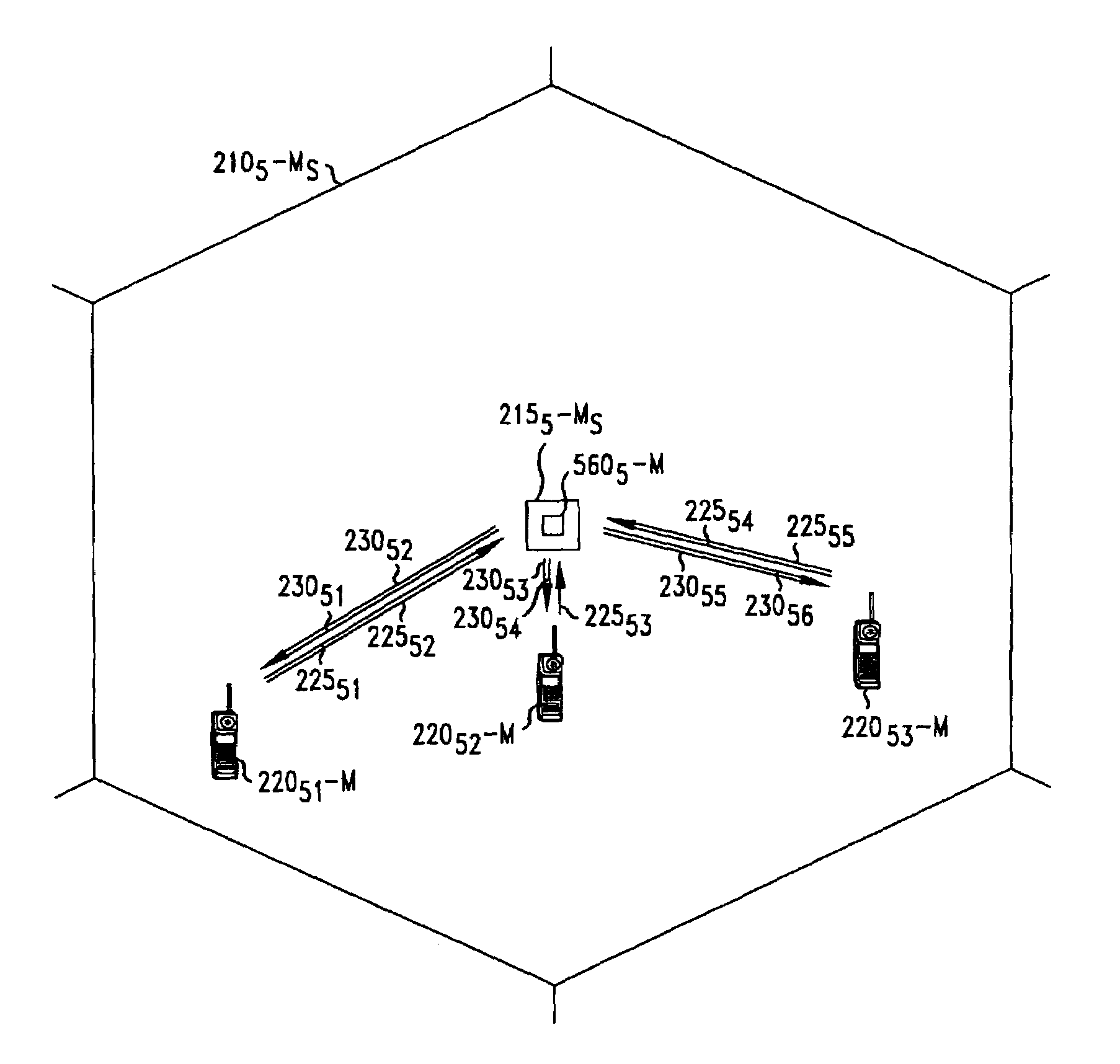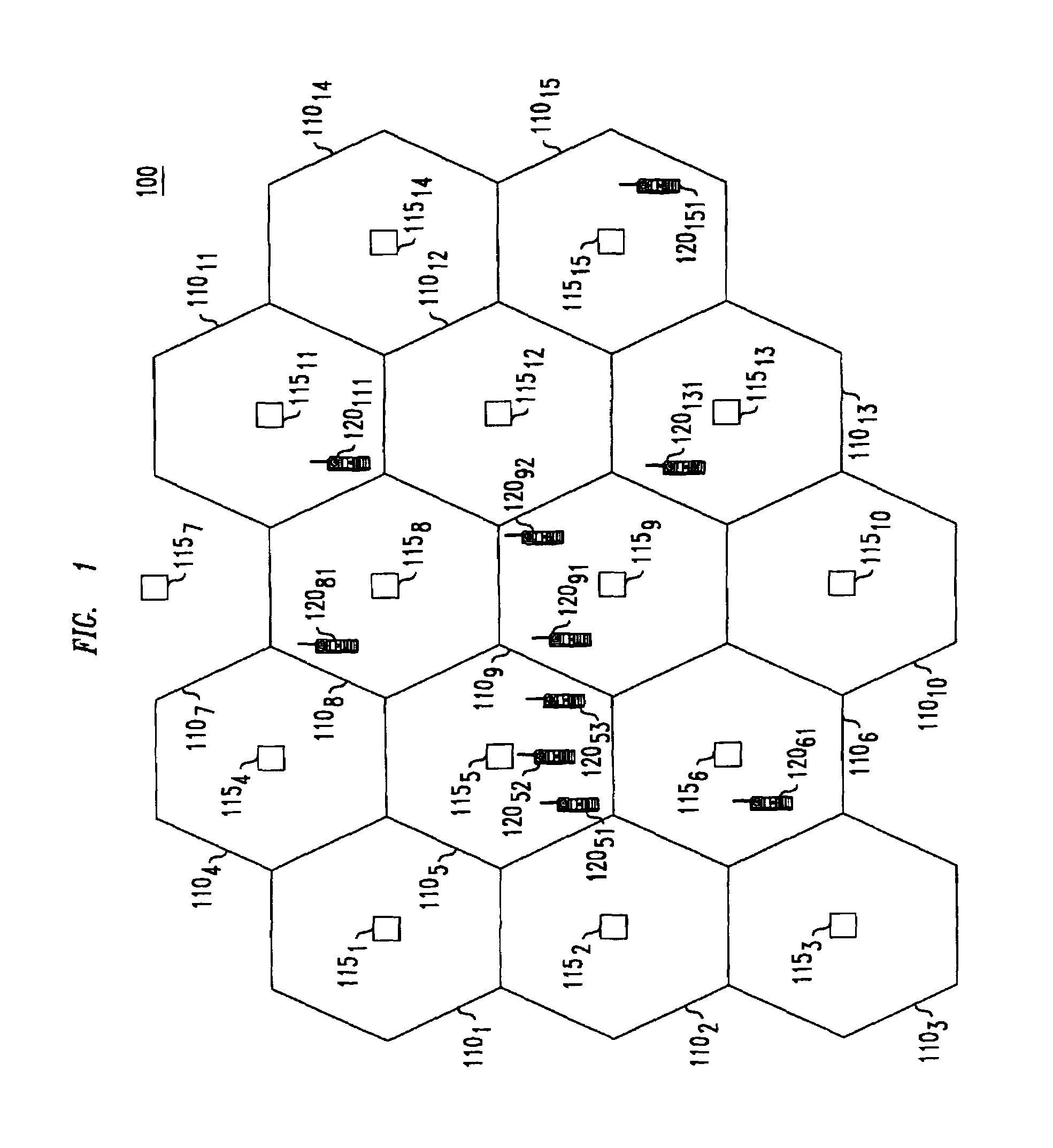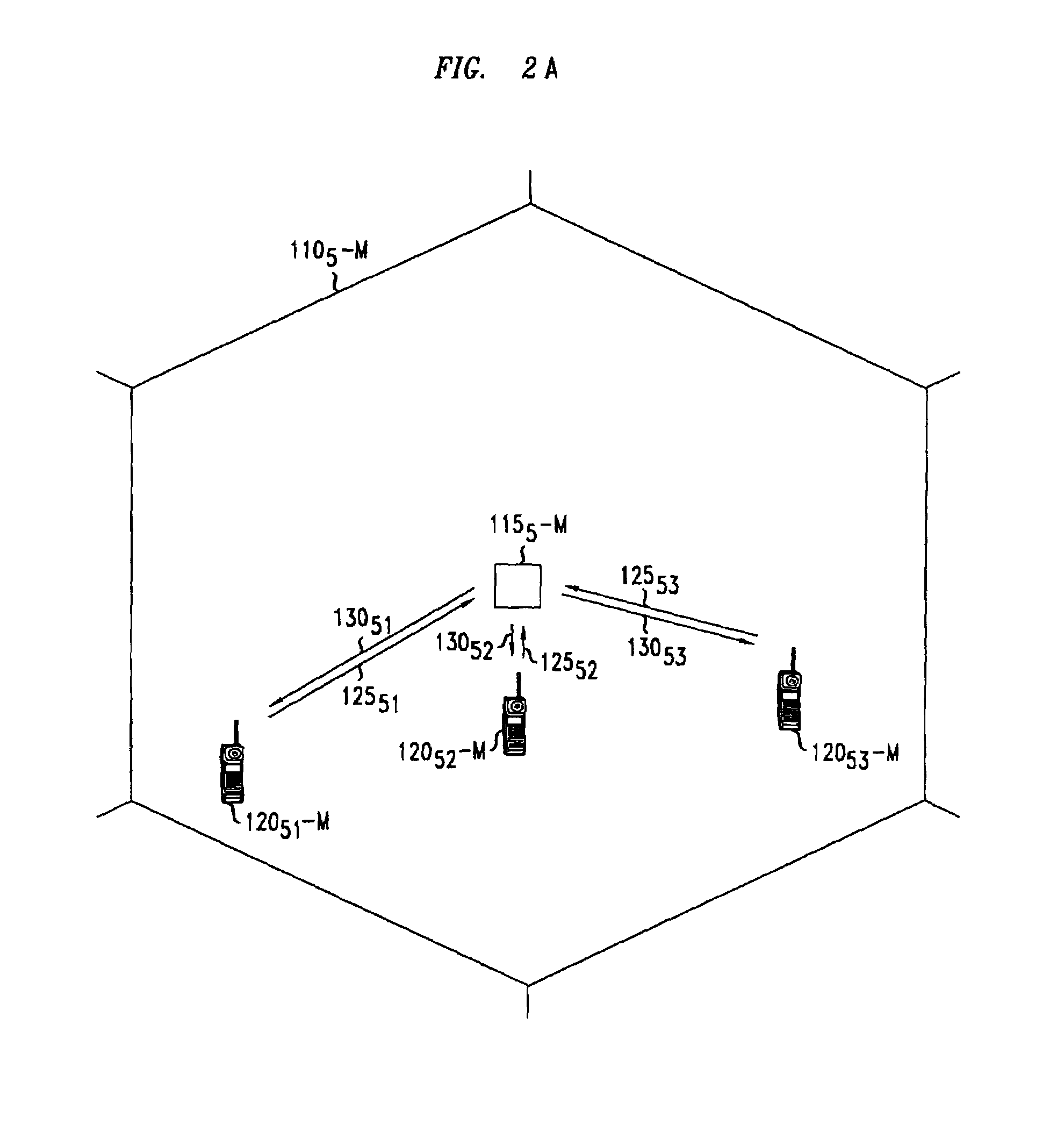Wireless communication system with interference compensation
a communication system and interference compensation technology, applied in the field of wireless communication systems, to achieve the effect of reducing the amount of computation necessary, reducing the complexity of calculations, and increasing the capacity
- Summary
- Abstract
- Description
- Claims
- Application Information
AI Technical Summary
Benefits of technology
Problems solved by technology
Method used
Image
Examples
Embodiment Construction
[0022]FIG. 1 illustrates a portion of a wireless communication system 100. The geographic area serviced by system 100 is divided into a plurality of spatially distinct areas called “cells.” Although cells 1101, . . . 10015 are illustrated as a hexagon in a honeycomb pattern, each cell is actually of an irregular shape that depends on obstacles and topography in the geographical area. Each cell 1101, . . . 10015 contains a base station 1151 . . . 11515, respectively. Each base station 1151 . . . 11515 includes equipment to communicate with Mobile Switching Center (“MSC”) (not shown), which is connected to local and / or long-distance transmission network, such as a public switch telephone network (PSTN). Each base station 1151 . . . 11515 also includes radios and antennas that the base station uses to communicate with mobile terminals.
Compensation Techniques
[0023]As described above, signals transmitted between base stations and mobile terminals within a wireless communication system in...
PUM
 Login to View More
Login to View More Abstract
Description
Claims
Application Information
 Login to View More
Login to View More - R&D
- Intellectual Property
- Life Sciences
- Materials
- Tech Scout
- Unparalleled Data Quality
- Higher Quality Content
- 60% Fewer Hallucinations
Browse by: Latest US Patents, China's latest patents, Technical Efficacy Thesaurus, Application Domain, Technology Topic, Popular Technical Reports.
© 2025 PatSnap. All rights reserved.Legal|Privacy policy|Modern Slavery Act Transparency Statement|Sitemap|About US| Contact US: help@patsnap.com



